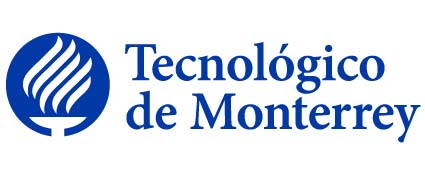
|
|||||
Disciplina asociada:Ciencias |
|||||
Escuela:
Preparatoria
|
|||||
Departamento Académico:
Ciencias Preparatoria
|
|||||
Programas académicos: |
|||||
Requisitos:No tiene. |
|||||
Equivalencia:PC1003 |
|||||
Intención del curso en el contexto general del plan de estudios: |
|||||
|
Curso de nivel básico del área de ciencias naturales. Requiere que el alumno tenga las nociones básicas de las ciencias naturales de nivel medio. Las competencias de egreso que se busca fortalecer o desarrollar con este curso son que el alumno comprenda y aprecie el quehacer científico como instrumento de progreso e innovación y formule preguntas apropiadas y pertinentes que le permitan comprender un fenómeno desde distintosenfoques. Como resultado del aprendizaje el alumno elaborará reportes de actividades y prácticas relacionadas con la estructura y el funcionamiento de los seres vivos y su entorno, que podrán formar parte de su portafolio personal. |
|||||
Objetivo general de la Unidad de Formación: |
|||||
|
Al final del curso el alumno, a través del uso de la metodología científica, será capaz de:
- Comprender el origen, las características y los procesos que soportan la vida considerando a la célula como la unidad estructural y funcional. |
|||||
Técnica didáctica sugerida: |
|||||
| Aprendizaje colaborativo | |||||
Bibliografía sugerida: |
|||||
|
LIBROS DE TEXTO: * Sylvia S. Mader ... [et al.]., Inquiry into life, 13th ed., New York, NY : McGraw Hill, 2011, 9780071220385 * Audesirk, Teresa. , Gerald Audesirk, Bruce E. Byers., Biology : life on Earth, 9th ed., San Francisco, Calif. ; México : Benjamin Cummings, 2011, 0321561619, 0321598474, 9780321561619 (Professional copy), 9780321598479 (Student edition) * Starr, Cecie. ,Christine A. Evers, Lisa Starr., Biology : today and tomorrow with physiology, 4th Ed., Belmont, CA : Brooks/Cole, Cengage Learning, 2013, 1133590551 (ed. internacional), 9781133590552 (ed. internacional) |
|||||
Perfil del Profesor: |
|||||
|
(260101)Licenciatura en Biología/Ciencias Biológicas ; (260499)Licenciatura en Biología Celular/Ciencias Anatómicas ; (260204)Licenciatura en Biología Molecular ; (260101)Maestría en Biología/Ciencias Biológicas ; (260499)Maestría en Biología Celular/Ciencias Anatómicas ; (260204)Maestría en Biología Molecular ; (260204)Doctorado en Biología Molecular CIP: 260101, 260499, 260204 Experiencia recomendada: Experiencia en educación, preferentemente media o superior y experiencia deseable en investigación o desarrollo de proyectos. |
|||||
|
|||||
Discipline:Sciences |
|||||
School:
High School
|
|||||
Academic Department:
Sciences High School
|
|||||
Programs: |
|||||
Prerequisites:None. |
|||||
Equivalences:PC1003 |
|||||
Course intention within the general study plan context: |
|||||
|
Basic level course in the area of natural sciences. Requires that the students have basic notions of natural science at an average level. The graduate competencies that this course seeks to strengthen and develop are that the students understand and appreciate the scientific task as an instrument of progress and innovation and to ask appropriate and relevant questions that help you understand a phenomenon from different perspectives. As students learn, they will turn in reports and activities related to the structure and function of living things and their environment, and these will make up part of their personal portfolio. |
|||||
Course objective: |
|||||
|
Upon completion of the course, students, using the scientific method, will be able to: - Understand the origin, characteristics and processes that support life, considering the cell as the structural and functional unit. - Analyze the continuity, evolution and diversity of living beings, identifying the relevance of their genetic information and adaptation to different environments, in order to appreciate the importance of maintaining balance within the ecosystems in their environment. |
|||||
Teaching and learning tecniques: |
|||||
| Collaborative learning | |||||
Suggested Bibliography: |
|||||
|
TEXT BOOKS: * Sylvia S. Mader ... [et al.]., Inquiry into life, 13th ed., New York, NY : McGraw Hill, 2011, 9780071220385 * Audesirk, Teresa. , Gerald Audesirk, Bruce E. Byers., Biology : life on Earth, 9th ed., San Francisco, Calif. ; México : Benjamin Cummings, 2011, 0321561619, 0321598474, 9780321561619 (Professional copy), 9780321598479 (Student edition) * Starr, Cecie. ,Christine A. Evers, Lisa Starr., Biology : today and tomorrow with physiology, 4th Ed., Belmont, CA : Brooks/Cole, Cengage Learning, 2013, 1133590551 (ed. internacional), 9781133590552 (ed. internacional) |
|||||
Academic credentials required to teach the course: |
|||||
|
(260101)Bachelor in Biology/Biological Sciences and (260499)Bachelor in Cellular Biology/Anatomical Sciences and (260204)Bachelor in Molecular Biology and (260101)Master Degree in Biology/Biological Sciences and (260499)Master Degree in Cellular Biology/Anatomical Sciences and (260204)Master Degree in Molecular Biology and (260204)Doctoral Degree in Molecular Biology CIP: 260101, 260499, 260204 Recommended Experience: Experience in education, high school or higher. Desirable experience in research or project development.
|
|||||